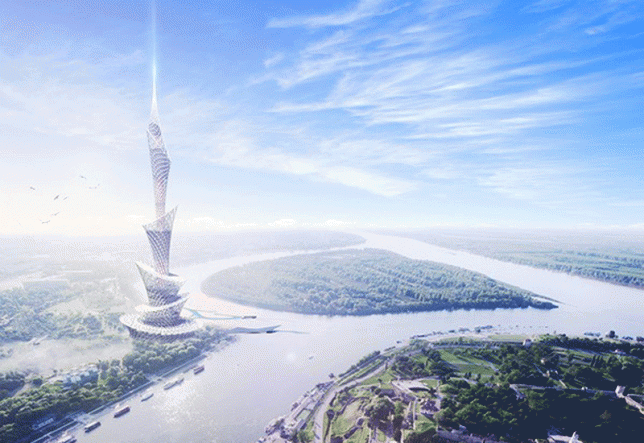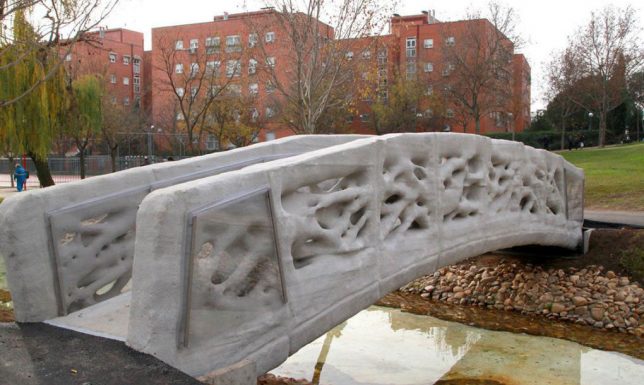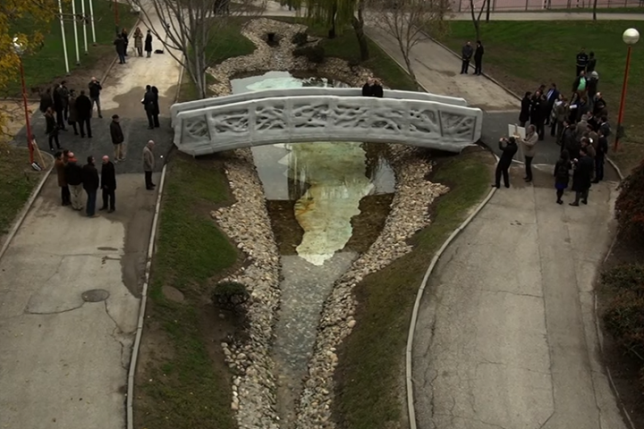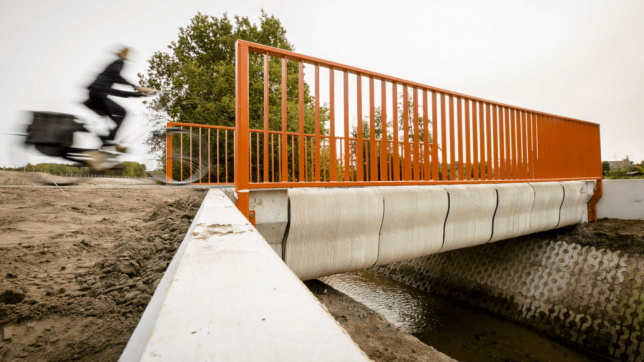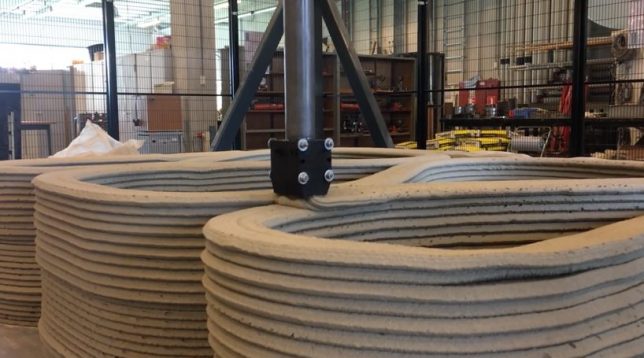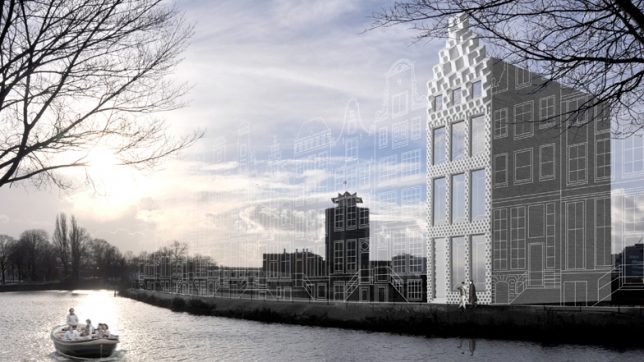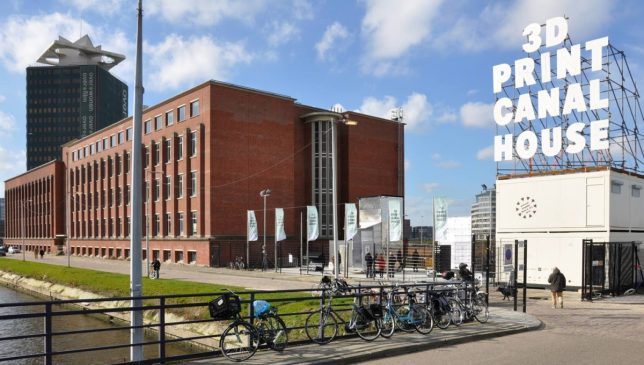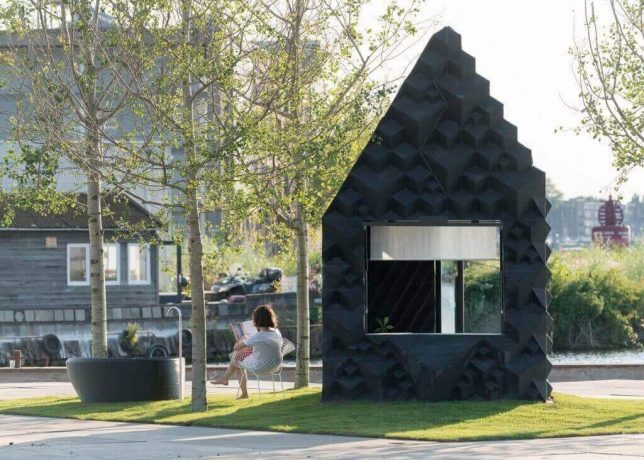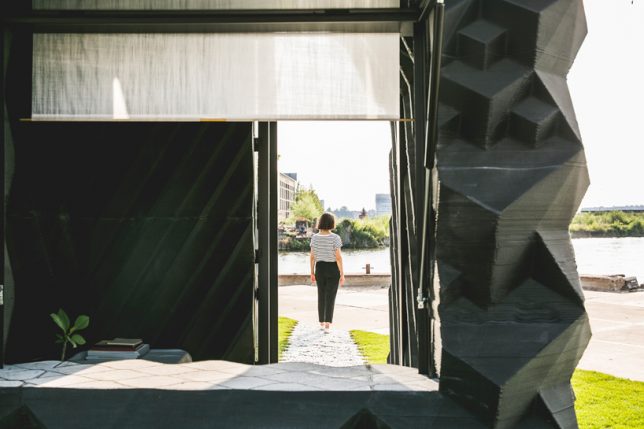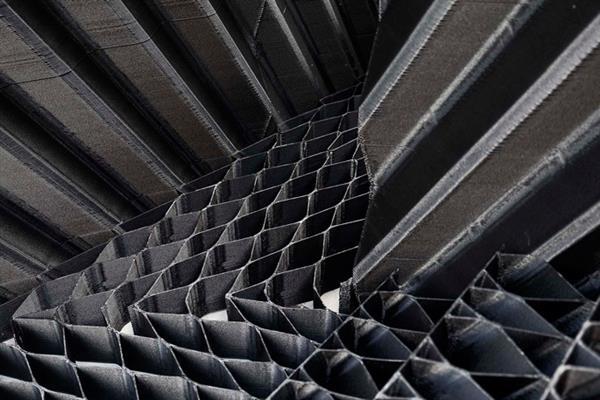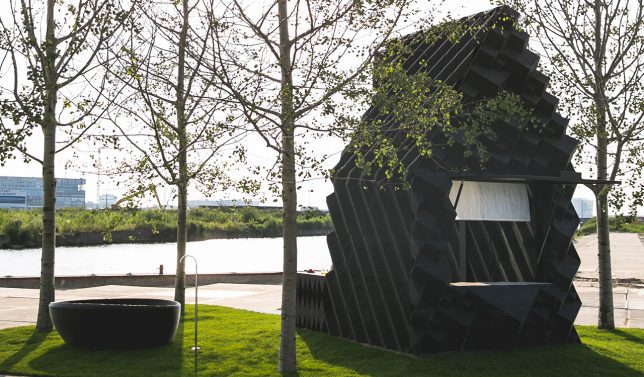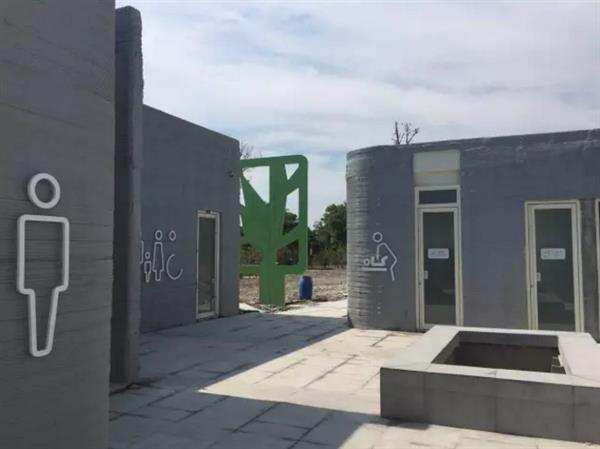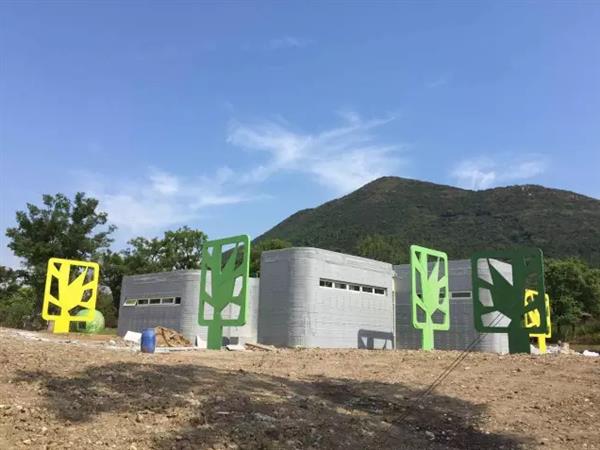Larger-Scale Architecture: World’s First 3D-Printed Skyscraper for Dubai
A company called Cazza has announced its intention to build the world’s first 3D-printed skyscraper in Dubai using the large robotic 3D printers that already allow them to construct buildings that aren’t quite as tall. All of the essential components would be 3D-printed individually and then assembled with cranes. No details about the building’s height or when the proejct will begin have been released. The Prime Minister of the UAE and Emir of Dubai, Sheikh Mohammed bin Al Maktoum, aims to make 25 percent of the buildigns in Dubai 3D-printed by 2030.
Infrastructure: 3D-Printed Concrete Pedestrian Bridge in Madrid & Bicycle Bridge in The Netherlands
The world’s first concrete large-scale 3D-printed bridge went up in Madrid in December 2016, offering a pedestrian route across a small creek. It was positioned using a crane so quickly and easily that its installation didn’t cost the city anything at all. In Amsterdam, the Eindhoven University of Technology collaborated with construction group BAM infrastructure to build and install a 3D-printed cocnrete bicycle bridge across a canal.
“We have a world’s first here,” says Marinus Schimmel, director of BAM. ‘With 3D printing, you have more flexibility ergarding the shape of the product. In addition, 3D printing a bridge is also incredibly efficient: you need less concrete, but there is also no need for shuttering where concrete is normally poured in. You just use exactly what you need, and there is no release of CO2 emissions.”
Smaller-Scale Architecture: 3D-Printed Canal House in Amsterdam
The whole process of printing the ambitious Canal House by DUS Architects will be open and visible to the public. A custom-build 3D printer called the KamerMaker (Dutch for “room builder”) prints all of the various large parts using recycled plastic. The designers note that “complexity is free” in 3D printing, so they can make the facade as ornamental as they like with no added costs. The project is expected to be completed in 2018.
Smaller-Scale Architecture: 3D-Printed Urban Cabin in Amsterdam
Another new 3D-printed creation by DUS Architects, this 3D-printed urban cabin is a small black structure set in a former industrial area of Amsterdam beside a 3D printed outdoor bathtub. It’s made of a black “bio print” material consisting mostly of linseed oil that can be shredded down and reused for new designs. The cabin can be booked for short stays in the city. “The 3D printed Urban Cabin rethinks intimacy and individual space within the city,” says DUS. “A precise insertion changed the former industrial area from a vast empty non-place to a retreat to escape the speed of everyday life and to enjoy summer, the waterfront and the sunset with friends or by yourself.”
Infrastructure: 3D-Printed Public Toilets
They’re not exactly glamorous or high-design, but these fully 3D-printed public toilets in Suzhou prove how much easier it could become to improve public facilities around the world. These ones by WinSun China are a result of China’s National Tourism Bureau pushing for a ‘toilet revolution’ to better accommodate tourism. They were installed in the scenic Da Yang Mountain area, surrounded with giant colorful 3d ginkgo leaves.
